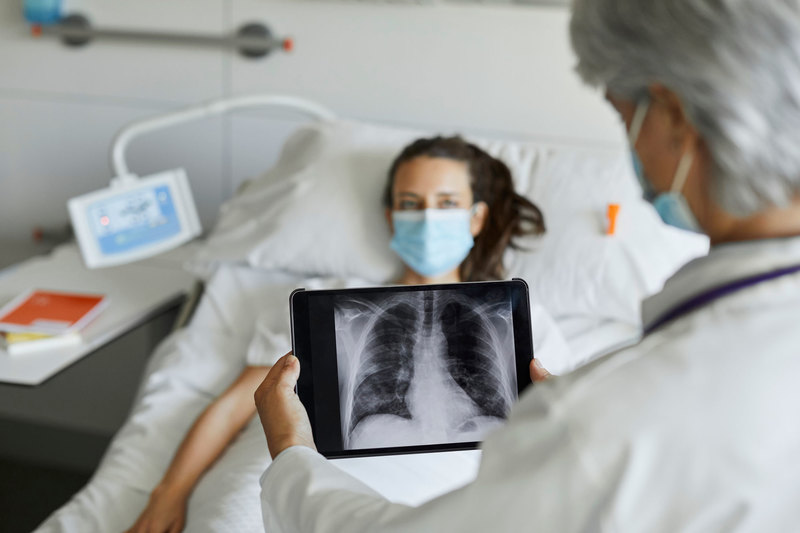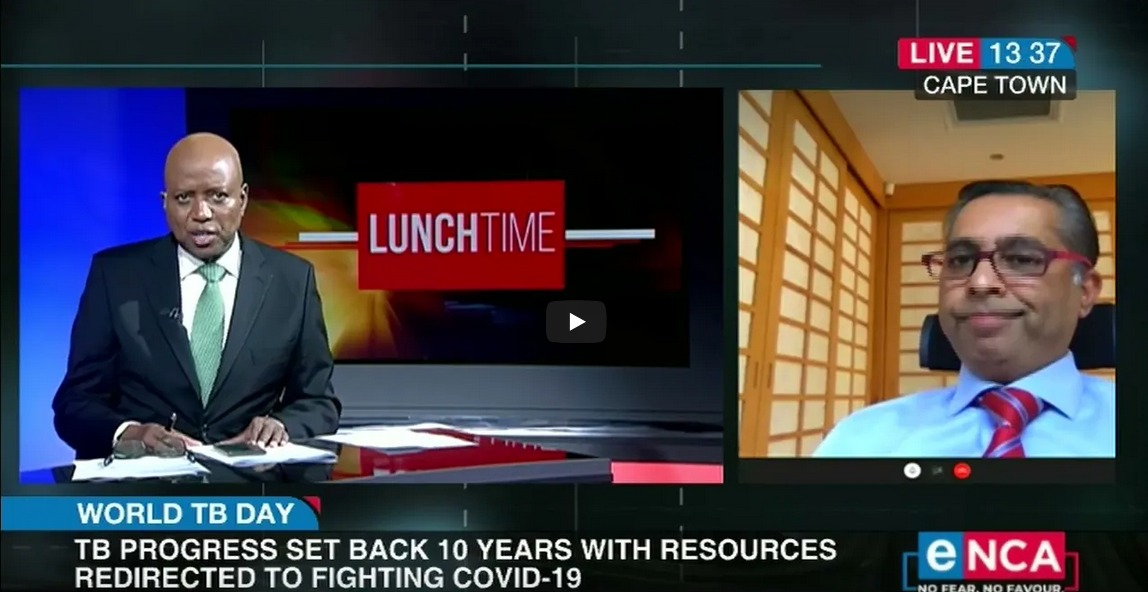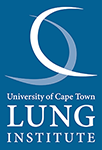
Interpreting chronic COVID-19 lung complications
4th March 2021
World TB Day | What happens to TB patients during the COVID-19 pandemic?
24th March 2021Are efforts to contain COVID-19 jeopardising our chances of ending the TB crisis?
T-SPOT.TB – 24 March 2021

While the coronavirus itself may be a global pandemic of biblical proportions, it is imperative to consider its impact on the efforts made in controlling other infectious diseases. Academic institutions, pharmaceutical companies, health care providers and governments have channelled an enormous amount of focus and funding to abate the COVID-19 pandemic and with good reason. However, there is increasing concern that this singular mentality is set to undo the progress made in controlling tuberculosis (TB); a disease that results in roughly 10 million new cases worldwide, every year1.
TB remains the leading cause of death by a single infectious agent1 – having killed approximately 1.4 million people annually2. The fact that TB is preventable, as well as curable in the majority of cases, makes this all the more shocking.
Sadly, TB is a disease characterised by poverty, vulnerability and discrimination and in turn, has perhaps received unequal attention when compared to diseases that are more prominent in affluent areas. Untreated, active tuberculosis primarily affects the lungs and many patients with a history of TB have some degree of lung damage or scarring. It is possible for TB to spread to other areas of the body leading to further suffering from spinal cord disease, joint damage, swelling of membranes that surround the brain, liver and kidney problems and heart disorders.
Conversely, latent TB infection (LTBI) occurs when Mycobacterium tuberculosis – the causative agent of TB – is found within the body but is kept under control by the body’s immune system and does not cause any symptoms. As LTBI can progress to the active form of the disease when the immune system is compromised, there is currently the additional worry that reduced detection due to COVID-19 contraction could increase the numbers of active TB sufferers.
The enormity of the TB problem has been recognised by the World Health Organization (WHO) prompting the formation of the End TB Strategy in 2014. The strategy sets ambitious targets, aiming to reduce TB deaths by 95% and to cut new cases by 90% between 2015 and 20353. Despite this concerted effort, at the end of 2019, the world as a whole, including many high TB burden countries were not on track to reach the 2020 milestones1. Moreover, the progress that has been made in the reduction of TB incidence rate (9% cumulative reduction between 2015 and 2 0191) is being threatened by the COVID-19 pandemic.
The impact of COVID-19 on TB services
The reasons underpinning a disruption to TB prevention, diagnosis and treatment in light of the COVID-19 pandemic are manifold. Resources and funding have been diverted away from other infectious diseases towards COVID-19. There are many parallels between COVID-19 and TB; they are both diseases that affect the respiratory system, manifest with similar symptoms and show similar transmission patterns. While TB research has informed, assisted and strengthened the COVID-19 response4, it is becoming increasingly clear that the relationship is one-sided. In fact, the parallels between the two have led to the conversion of TB-dedicated hospitals, wards and diagnostic labs to infrastructures prioritising COVID-195,6.
Of course, prevention is always better than cure. This may be one sentiment where the COVID-19 pandemic has helped, rather than hindered, the spread of TB. Across the world, people are being both encouraged and enforced to abide by social distancing measures. Coupled with handwashing and wearing a facemask, it is entirely feasible that social distancing could have a significant positive impact on world-wide TB incidence7. Nevertheless, it is predicted that the negative outcomes caused by the disruption to TB health services will far outweigh any benefit afforded by social distancing measures8. Additionally, LTBI testing serves as a critical TB preventative measure since it is estimated that approximately a quarter of the population is infected with M. tuberculosis1. However, people with a cough and fever—symptoms that present in TB patients— may be worried about seeking care through fear of contributing to the spread of COVID-19 and burdening over-stretched health services.
Worryingly, we are already seeing the impact this is having on TB diagnosis with several high TB burden countries having reported reductions in monthly diagnosis numbers1. For example, in some countries – including India and Indonesia – and in line with a national lockdown, the weekly number of TB case notifications dropped by up to 50% between the end of March and late April. Alarmingly, this could result in as many as 200,000-400,000 additional deaths. The treatment of TB is being similarly affected by the re-assignment of respiratory and infectious disease doctors and health care spaces resulting in an overall reduction in out-patient consultations1.
Funding for TB research and development reached a historic high in 2019 but remained at less than half of the $2 billion funding target required to meet WHO’s End TB targets by 20301. The problem of under-funding is compounded by the redirection of funds and research personnel to coronavirus-related activities. As well as impacting longer term deliverables, such as technological breakthroughs, COVID-19 is affecting TB R&D efforts now. While many TB trials and sites around the world have paused enrolment, others may have to cease altogether; unable to reach their intended sample sizes due to costs associated with extending timelines4. Even if trials have managed to attain an acceptable sample size and mitigated the challenges of participant access due to lockdown, import of trial drugs and export of samples remains an issue.
Has the COVID-19 pandemic derailed End TB?
It is important to recognise that progress has been made toward the End TB goals and to acknowledge all the people working tirelessly behind the scenes. Globally the TB incidence rate is slowly falling1 however, the COVID-19 pandemic has made finding, diagnosing and treating TB increasingly difficult. While it is hard to quantify the extent to which COVID-19 has impacted the End TB strategy, a quick glance at the statistics shows that it is unlikely the 2020 milestones have been met. Moreover, some studies have estimated that disruptions to TB services, and the resultant accumulation of undetected TB, could lead to an additional 6.3 million TB cases and 1.4 million deaths between 2020 and 20258. These estimates resonate with real life scenarios seen in the past, where Ebola outbreaks and the SARS pandemic in 2003 gave TB the opportunity to spread while our attention was elsewhere9.
Learn from yesterday, plan for tomorrow
In addition to disrupting TB services, COVID-19 has profoundly emphasised the lack of action taken to combat TB. In stark contrast to TB, three new vaccines for COVID-19 were approved10 for use within a year and hundreds are in various stages of development11. Around the globe, governments, pharmaceutical companies, health care providers, research institutes and the public rapidly adopted strategies to curb the spread of a new coronavirus variant. Yet, TB – a disease with comparable death rates and a much longer history of affliction – has just one vaccine that has completed phase 3 trials, with limited efficacy in adults12. The COVID-19 response has provided us with an idea of how quickly, efficiently and safely infectious diseases can be managed, and this should serve as a springboard when looking to the future of TB healthcare.
Treatment and management of TB is contingent on routine-screening and reliable early detection methods. Screening is of such paramount importance that the WHO has provided specific guidance relating to the improvement of rapid TB diagnostics13. Being able to detect and treat LTBI is critical to eliminating TB since reactivation of LTBI is the source of the vast majority of new TB cases in low transmission areas14. Interferon-Gamma Release Assays (IGRAs) are well-established immunodiagnostic tests that offer rapid diagnosis of LTBI in a single patient visit and have the advantage that prior BCG vaccination does not result in false-positives15. Recent improvements to the IGRA test have facilitated its automation, improved its sensitivity as well as its reliability in challenging populations, such as immunosuppressed patients16. Mobilising resources to countries such as South Africa, where TB prevalence is high, and where many are concerned about the combination of TB lung damage and COVID-19 contraction, is more critical than ever.
In summary of his thought leadership piece, Professor Keertan Dheda said:
“The important question here is how should we address the reduced detection and resulting increased mortality from TB? In order to reverse these disturbing trends, we need to embark on innovative active case finding and intervention strategies. This may include: use of newer TB screening apps, health worker-facilitated collection of samples from patient households, community-based TB testing using portable molecular tools, public facing TB dashboards (such as those used during COVID to improve advocacy and accountability), more intensive, targeted screening of at-risk groups, and the provision of TB preventative therapy for HIV-uninfected close contacts in TB endemic countries.”
References
1. WHO | GLOBAL TUBERCULOSIS REPORT 2020. (2020)
2. Deaths from TB – figures from 2020 report. https://tbfacts.org/deaths-from-tb/.
3. WHO | The End TB Strategy. WHO (2020).
4. Tomlinson, C. TB Research Investments Provide Returns in Combating Both TB and COVID-19. www.treatmentactiongroup.org (2020).
5. Urgent call for continuity of TB services during the COVID-19 pandemic in China | The Union. https://theunion.org/news/urgent-call-for-continuity-of-tb-services-during-the-covid-19-pandemic-in-china.
6. Fei H, Yinyin X, Hui C, et al. The impact of the COVID-19 epidemic on tuberculosis control in China. The Lancet. 2020; 3.
7. Little P, Read RC, Amlôt R, et al. Reducing risks from coronavirus transmission in the home-the role of viral load. The BMJ. 2020; 369.
8. Finn MC, McCreesh N, Read JM, et al. The potential impact of COVID-19-related disruption on tuberculosis burden. European Respiratory Journal. 2020; 56(2).
9. Nathavitharana, R. R. & Friedland, J. S. A tale of two global emergencies: Tuberculosis control efforts can learn from the Ebola outbreak. Eur. Respir. J. 2015; 46: 293–296.
10. CDC | Different COVID-19 Vaccines. https://www.cdc.gov/coronavirus/2019-ncov/vaccines/different-vaccines.html.
11. WHO | Draft landscape and tracker of COVID-19 candidate vaccines. https://www.who.int/publications/m/item/draft-landscape-of-covid-19-candidate-vaccines..
12. WHO | Tuberculosis vaccine development. WHO (2020).
13. WHO | Policy statements. WHO (2020).
14. Stop TB Partnership | New Diagnostics Working Group. http://www.stoptb.org/wg/new_diagnostics/ltbi.asp.
15. CDC | Fact Sheets | Testing & Diagnosis | Fact Sheet – Recommendations for Human Immunodeficiency… Clinics | TB. https://www.cdc.gov/tb/publications/factsheets/testing/igra.htm.
16. A Single Visit Blood Test for Tuberculosis | The T-SPOT.TB test. https://www.tspot.com/uk/.


